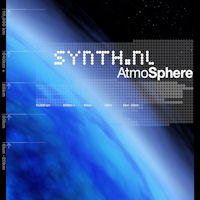
As posted before I'm still testing different monitors in my studio. I liked the sound ot the 8050's a lot, but I saw that they also have an all digital system with build in room correction (in the speakers itself). So I decided to give them a go as well. I'm currently testing the Genelec 8250's that look exactly the same, but are from the DSP powered series from Genelec, also the sub was exchanged for a 7270A and that is also the digital (DSP) version of the 7070A that I had before. It comes with a piece of software that you have to install on your PC, a special audio interface that connects with USB to your PC that also works as a network interface for the speakers and a specially calibrated test microphone that also connects to this box.

The first thing you have to do is install the software on your PC and then connect the audio interface so that the drivers are automaticly installed. This all went very smoothly. Then you connect the speakers with UTP CAT5 cable (same you use for network) to each other. You just make a big loop going from the audio box to the sub woofer and from there to the left speaker and then to the right. They all have a network in and through for that. Then when you fire up the speakers they instantly are recognized. You will also have to hook up audio after that. The sub again acts as a central hub and only accepts AES/SBU for input signals. So I put a converter on the SPDIF output I used for my monitoring. Then again you just loop to the other speakers. And in the software you appoint which speaker is left and right. A very weird way to connect speakers if you think about it, but it works just fine :)

After that you set up the microphone onto your primary listening position and start a wizard in the software that takes you through the room correction process. Speaker by speaker it does a number of tests to determine the distance, and after that a frequency sweep to measure the room response. What is very remarkable by the way is that you have to enter the serial number of the microphone. All microphones are calibrated by Genelec in a special room and a compensation is done in the software for each individual microphone. On the left you can see what was measured and compensated in the EQ of the particular speaker. I'm still experimenting around, so this wont be the final settings. But you can see how much parameters are available and also you can adjust them later manually to your own taste. As you can see it did some corrections in the low end that are in line with the measurements Toine did from Sound Scapes.

After the main speakers also a series of tests is done for the sub woofer. The most important one is a phase test. Usually the biggest problem using a sub woofer is to get it in perfect phase alignment with your other speakers. Well this is just a dream come true then. As you can see in the picture also the sub woofer has a build in equalizer and it is really bad to see how much had to be compensated here. Again proving that we need to do more on the acoustics of the room itself. But the end result is stunning. It really sounds terrific. So balanced it is almost unbelievable so I can say that the system actually works :) And it really does make the overall sound way better than the already good sounding 8050's I had. I wouldn't want to go back at this point. Actually I'm so satisfied with the result and the flexibility of this system that I think I'm going to go for it. I love the concept and sound of it. I wouldn't know what could possibly impress me more than this. Besides that it allows me to start working on my mixes already before the final room treatment is done. I like that idea as well :)
 As posted before I'm still testing different monitors in my studio. I liked the sound ot the 8050's a lot, but I saw that they also have an all digital system with build in room correction (in the speakers itself). So I decided to give them a go as well. I'm currently testing the Genelec 8250's that look exactly the same, but are from the DSP powered series from Genelec, also the sub was exchanged for a 7270A and that is also the digital (DSP) version of the 7070A that I had before. It comes with a piece of software that you have to install on your PC, a special audio interface that connects with USB to your PC that also works as a network interface for the speakers and a specially calibrated test microphone that also connects to this box.
As posted before I'm still testing different monitors in my studio. I liked the sound ot the 8050's a lot, but I saw that they also have an all digital system with build in room correction (in the speakers itself). So I decided to give them a go as well. I'm currently testing the Genelec 8250's that look exactly the same, but are from the DSP powered series from Genelec, also the sub was exchanged for a 7270A and that is also the digital (DSP) version of the 7070A that I had before. It comes with a piece of software that you have to install on your PC, a special audio interface that connects with USB to your PC that also works as a network interface for the speakers and a specially calibrated test microphone that also connects to this box. The first thing you have to do is install the software on your PC and then connect the audio interface so that the drivers are automaticly installed. This all went very smoothly. Then you connect the speakers with UTP CAT5 cable (same you use for network) to each other. You just make a big loop going from the audio box to the sub woofer and from there to the left speaker and then to the right. They all have a network in and through for that. Then when you fire up the speakers they instantly are recognized. You will also have to hook up audio after that. The sub again acts as a central hub and only accepts AES/SBU for input signals. So I put a converter on the SPDIF output I used for my monitoring. Then again you just loop to the other speakers. And in the software you appoint which speaker is left and right. A very weird way to connect speakers if you think about it, but it works just fine :)
The first thing you have to do is install the software on your PC and then connect the audio interface so that the drivers are automaticly installed. This all went very smoothly. Then you connect the speakers with UTP CAT5 cable (same you use for network) to each other. You just make a big loop going from the audio box to the sub woofer and from there to the left speaker and then to the right. They all have a network in and through for that. Then when you fire up the speakers they instantly are recognized. You will also have to hook up audio after that. The sub again acts as a central hub and only accepts AES/SBU for input signals. So I put a converter on the SPDIF output I used for my monitoring. Then again you just loop to the other speakers. And in the software you appoint which speaker is left and right. A very weird way to connect speakers if you think about it, but it works just fine :) After that you set up the microphone onto your primary listening position and start a wizard in the software that takes you through the room correction process. Speaker by speaker it does a number of tests to determine the distance, and after that a frequency sweep to measure the room response. What is very remarkable by the way is that you have to enter the serial number of the microphone. All microphones are calibrated by Genelec in a special room and a compensation is done in the software for each individual microphone. On the left you can see what was measured and compensated in the EQ of the particular speaker. I'm still experimenting around, so this wont be the final settings. But you can see how much parameters are available and also you can adjust them later manually to your own taste. As you can see it did some corrections in the low end that are in line with the measurements Toine did from Sound Scapes.
After that you set up the microphone onto your primary listening position and start a wizard in the software that takes you through the room correction process. Speaker by speaker it does a number of tests to determine the distance, and after that a frequency sweep to measure the room response. What is very remarkable by the way is that you have to enter the serial number of the microphone. All microphones are calibrated by Genelec in a special room and a compensation is done in the software for each individual microphone. On the left you can see what was measured and compensated in the EQ of the particular speaker. I'm still experimenting around, so this wont be the final settings. But you can see how much parameters are available and also you can adjust them later manually to your own taste. As you can see it did some corrections in the low end that are in line with the measurements Toine did from Sound Scapes. After the main speakers also a series of tests is done for the sub woofer. The most important one is a phase test. Usually the biggest problem using a sub woofer is to get it in perfect phase alignment with your other speakers. Well this is just a dream come true then. As you can see in the picture also the sub woofer has a build in equalizer and it is really bad to see how much had to be compensated here. Again proving that we need to do more on the acoustics of the room itself. But the end result is stunning. It really sounds terrific. So balanced it is almost unbelievable so I can say that the system actually works :) And it really does make the overall sound way better than the already good sounding 8050's I had. I wouldn't want to go back at this point. Actually I'm so satisfied with the result and the flexibility of this system that I think I'm going to go for it. I love the concept and sound of it. I wouldn't know what could possibly impress me more than this. Besides that it allows me to start working on my mixes already before the final room treatment is done. I like that idea as well :)
After the main speakers also a series of tests is done for the sub woofer. The most important one is a phase test. Usually the biggest problem using a sub woofer is to get it in perfect phase alignment with your other speakers. Well this is just a dream come true then. As you can see in the picture also the sub woofer has a build in equalizer and it is really bad to see how much had to be compensated here. Again proving that we need to do more on the acoustics of the room itself. But the end result is stunning. It really sounds terrific. So balanced it is almost unbelievable so I can say that the system actually works :) And it really does make the overall sound way better than the already good sounding 8050's I had. I wouldn't want to go back at this point. Actually I'm so satisfied with the result and the flexibility of this system that I think I'm going to go for it. I love the concept and sound of it. I wouldn't know what could possibly impress me more than this. Besides that it allows me to start working on my mixes already before the final room treatment is done. I like that idea as well :)










No comments:
Post a Comment